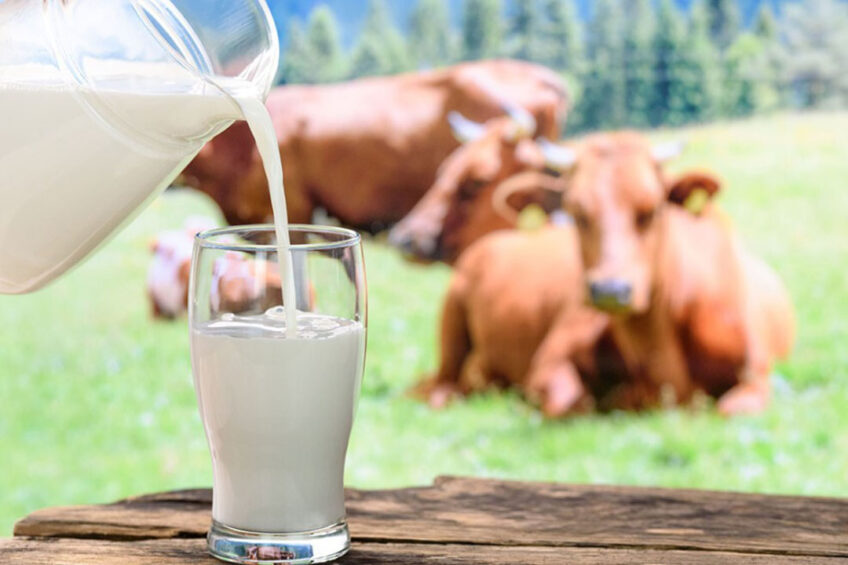Reducing cow methane emissions: Substituting rapeseed meal with cake

In a recent study published by the Journal of Dairy Science, it emerged that lipid supplementation is a promising tool to reduce methane emissions in ruminants.
Current approaches to improve the sustainability of ruminant production include breeding of animals with improved feed efficiency and reduced CH4 emissions as well as optimisation of animal feeding and management.
Several nutritional and management strategies have been reported to be effective in the mitigation of greenhouse gas emissions from ruminants. Recently, increasing attention has been given to the potential of chemical additives, such as 3-nitrooxypropanol and nitrate, or plant extracts. However, many of these strategies are not feasible solutions in practice, due to availability, transient effects, or high implementation costs.
Previous studies highlight the potential of lipid supplementation in depressing CH4 production from ruminants. As reported by the NRC (2001), dietary lipid supplements can also increase feed efficiency and increase the proportion of nutritionally desirable milk fatty acids.
Replacing rapeseed meal with rapeseed cake
In this study published in the Journal of Dairy Science (2022), researchers evaluated the benefits of a full replacement of rapeseed meal with high-oil rapeseed cake on enteric methane emissions, nutrient utilisation, and milk production in dairy cows. Nordic Red dairy cows received diets formulated to yield (on DM basis) a 45:55 ratio of grass silage to concentrate, composed of the following:
- Diet 1: control, containing 19.3% rapeseed meal (RM) on DM basis,
- Diet 2: diet 1 with full replacement of rapeseed meal with rapeseed cake (RSC; 19.3% DM).
Apparent total-tract digestibility was measured using the total collection of faeces, and CH4 emissions were measured in respiratory chambers on 4 consecutive days.
Methane emissions
The researchers found that, regardless of a similar fermentation pattern between the rapeseed meal and rapeseed cake diets, the total replacement of rapeseed meal with rapeseed cake decreases CH4 emissions (g/d) by 7%. Owing to increases in milk yield with rapeseed cake, CH4 emissions per unit of milk yield and energy-corrected milk (ECM) decreased by 16% and 12%, respectively.
The rapeseed cake diet also reduced CH4 emissions expressed per unit of feed intake (as dry matter intake, DMI). The emission of CO2 was also reduced per unit of milk or ECM with rapeseed cake compared to rapeseed meal.
Similar to the current study, researchers from Aarhus University found decreases in CH4 emissions per unit of ECM by 7%, 17%, and 18%, when a diet based on grass and corn silage was supplemented with lipids from rapeseed cake, whole cracked rapeseed, and rapeseed oil, respectively.
Nutrient digestion and utilisation
In this study, replacing rapeseed meal with rapeseed cake did not have significant effects on gross energy (GE) intake, but the ME intake was greater for rapeseed than for the meal. The digestibility of gross energy, protein, and fat was improved by the replacement of rapeseed meal with rapeseed cake.
Energy balance and N-balance values as well as feed efficiency (Milk/DMI and ECM/DMI) were higher in the rapeseed cake diet.
Milk production and composition
Replacing rapeseed meal with rapeseed cake resulted in greater yields of milk and energy-corrected milk, and feed efficiency. Relative to the meal diet, the cake decreased saturated fatty acids (FA) by 10% in milk fat by increasing cis-monounsaturated FA but also increased the proportion of trans FA.
In the present study, conducted with dairy cows in mid-lactation, the researchers suggested that the greater GE concentration (+0.4 MJ/kg DM) in rapeseed cake may have induced the improved milk yield without changing DMI. In addition, the increased milk yield with rapeseed cake was also attributed to increased milk lactose, as lactose is the main factor determining milk volume. On the other side, the lack of RSC diet effect on milk fat and protein concentrations was attributed to the low level of rapeseed oil supplementation (1.5% DM) in the current experiment.
Relative to rapeseed meal, the RSC diet decreased short chain fatty acids (SFA) by 10% in milk fat by replacing them with cis MUFA, especially cis-9 18:1. Moreover, RSC not only decreased SFA in general but also changed the composition of milk SFA by reducing 12:0, 14:0, and 16:0 while increasing 18:0. This change is beneficial for human health, as milk and dairy products contribute largely to the fat and SFA contents in the human diet.
A decrease in milk SFA concentration in RSC was attributed to an increase in the amount of long-chain unsaturated FA available for absorption, leading to an inhibition of de novo synthesis of short- and medium-chain FA in the mammary gland.
Conclusion
In conclusion, the replacement of rapeseed meal with rapeseed cake decreased methane production per kilogram of DMI and improved milk production and feed efficiency of lactating dairy cows. Based on these results, a diet containing rapeseed cake has the potential to reduce enteric CH4 emissions without compromising milk production and composition.






